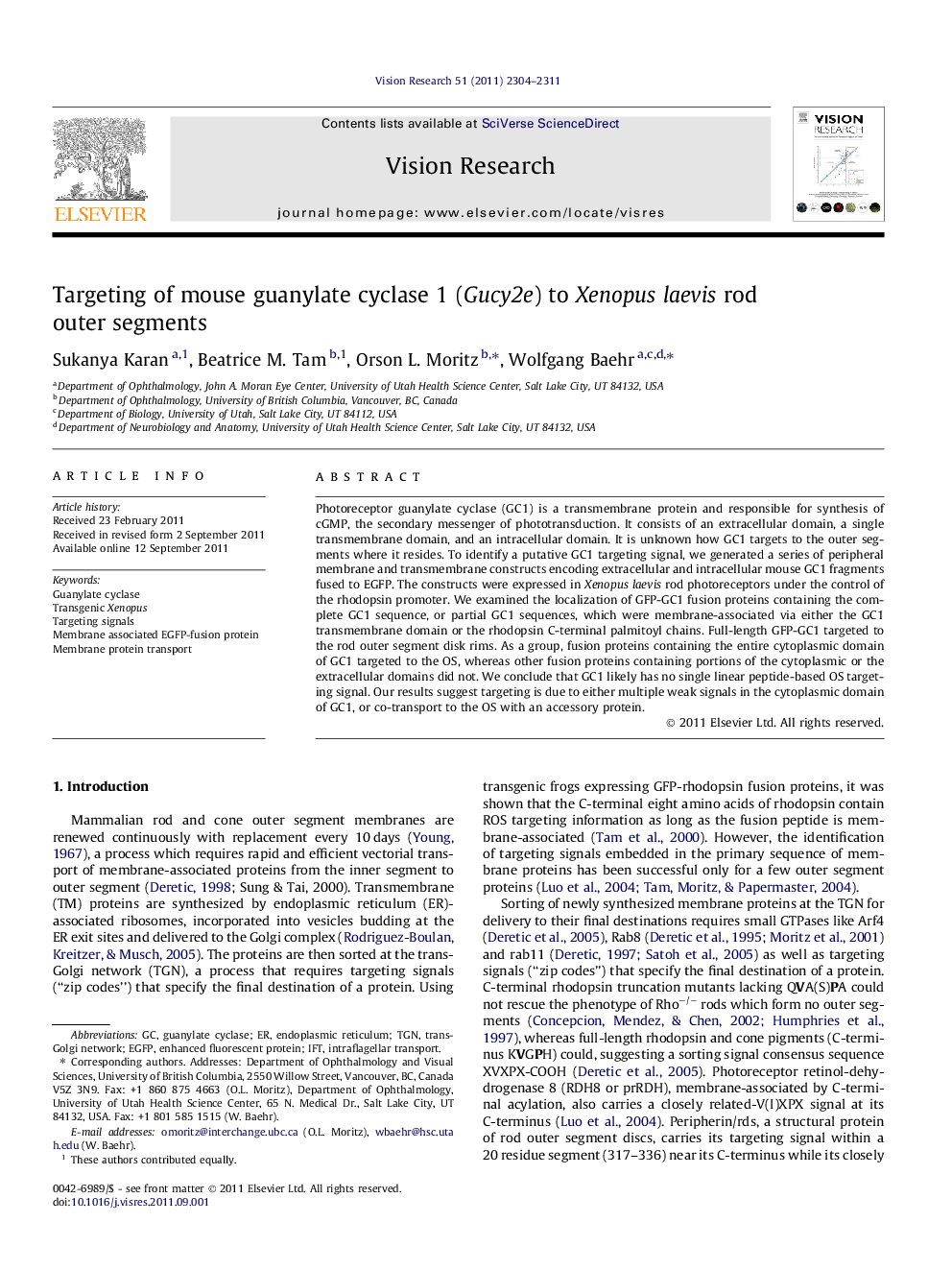| Article ID | Journal | Published Year | Pages | File Type |
|---|---|---|---|---|
| 4034113 | Vision Research | 2011 | 8 Pages |
Photoreceptor guanylate cyclase (GC1) is a transmembrane protein and responsible for synthesis of cGMP, the secondary messenger of phototransduction. It consists of an extracellular domain, a single transmembrane domain, and an intracellular domain. It is unknown how GC1 targets to the outer segments where it resides. To identify a putative GC1 targeting signal, we generated a series of peripheral membrane and transmembrane constructs encoding extracellular and intracellular mouse GC1 fragments fused to EGFP. The constructs were expressed in Xenopus laevis rod photoreceptors under the control of the rhodopsin promoter. We examined the localization of GFP-GC1 fusion proteins containing the complete GC1 sequence, or partial GC1 sequences, which were membrane-associated via either the GC1 transmembrane domain or the rhodopsin C-terminal palmitoyl chains. Full-length GFP-GC1 targeted to the rod outer segment disk rims. As a group, fusion proteins containing the entire cytoplasmic domain of GC1 targeted to the OS, whereas other fusion proteins containing portions of the cytoplasmic or the extracellular domains did not. We conclude that GC1 likely has no single linear peptide-based OS targeting signal. Our results suggest targeting is due to either multiple weak signals in the cytoplasmic domain of GC1, or co-transport to the OS with an accessory protein.
► GFP fused to the entire cytoplasmic region of GC1 targets to rod outer segments. ► This fusion localizes specifically to outer segment disk rims. ► Smaller fragments of the GC1 cytoplasmic region do not target GFP to outer segments. ► Outer segment localization information is contained within the cytoplasmic region of GC1. ► In contrast to rhodopsin, GC1 has no single linear peptide-based targeting signal.
